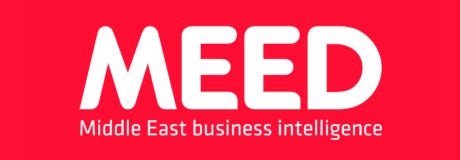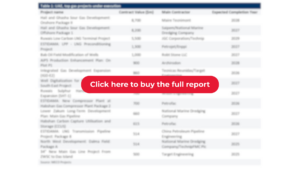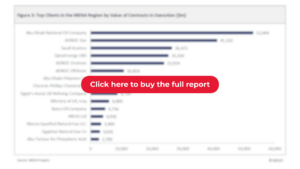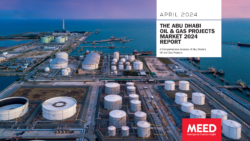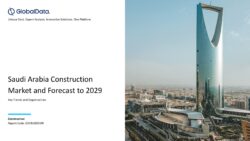Description
Mena Oil & Gas 2026
Unlock the future of energy in the Middle East and North Africa with MENA Oil & Gas 2026 — MEED’s flagship market intelligence report tailored for today’s decision-makers. Using MEED’s expert-reviewed data, the report delivers a detailed analysis of the region’s oil, gas and petrochemicals landscape.
Included in Mena Oil & Gas 2026:
- Detailed assessment of the outlook for the oil, gas and petrochemicals projects market in the Middle East and North Africa.
- Comprehensive review of 14 oil and gas markets across the Middle East and North Africa.
- Outlook for policy and investment in oil, gas and petrochemicals projects across the region.
- Track leading clients and market movers.
- Projects opportunities with client and procurement details.
- Investment drivers and client spending plans.
- Understand risks and set strategy in the Mena oil and gas market.
You’ll get project-by-project breakdowns, spending forecasts and insight into the evolving challenges facing stakeholders across the sector.
The report is of high value to anyone seeking to identify opportunities, understand risks and set strategy in the regional oil and gas projects market.
Energy Transition & Opportunity: MENA’s Strategic Realignment
The global shift away from fossil fuels marks one of the most profound transitions in modern history. For oil producers in the Middle East and North Africa (MENA), this is more than a shift in energy source—it’s a fundamental transformation of their business model. As global demand pivots, so too must the strategies of the region’s national oil companies (NOCs).
In response, leading NOCs across MENA are accelerating policy and investment reforms to maintain their relevance and influence. Their new direction is focused on:
- Diversifying into clean energy technologies and alternative fuels
- Conserving hydrocarbon reserves
- Reducing greenhouse gas (GHG) emissions through efficiency and innovation
Simultaneously, MENA’s oil exporters are broadening their horizons beyond the traditional Western markets, turning their focus to Asia, particularly China, India, and Southeast Asia. This shift is ushering in a new wave of clients, suppliers, and capital.
Despite the global energy realignment, MENA producers remain confident: hydrocarbons will continue to dominate the energy mix for decades. With some of the lowest production costs globally, the region retains a significant competitive advantage, prompting sustained investment to scale up both upstream and downstream capacity.
Investment Momentum: A Decade of Growth and Ambition
Since 2016, the GCC alone has awarded over $348bn in oil, gas, and petrochemical contracts, averaging more than $34bn annually. This momentum peaked in 2023, with a record $76bn of project spending fueled by landmark investments from ADNOC, QatarEnergy and Saudi Aramco, including:
- Jafurah and Hail & Ghasha field developments
- Qatar LNG expansion
- Almiral petrochemical complex
Capital expenditure in 2024 marked a notable decline of 11.8% compared to the record levels of 2023. By May 2025, total contract awards across the region had reached $22bn, reflecting a tempered pace of investment. The Kingdom of Saudi Arabia recorded a sharp drop, just $2.2bn in awards during the first five months of 2025, versus $16bn in the same period of 2024.
This downward trajectory is influenced by a combination of geopolitical uncertainty and fluctuating oil prices, which continue to cast a shadow over near-term spending plans. While the long-term fundamentals remain robust, short-term caution appears to be the prevailing tone in regional project activity.
Vast Pipeline, Rising Pressures
The outlook for the region remains highly promising, with over $640bn worth of oil, gas and petrochemical projects currently in the pipeline across the MENA region. These planned developments present exceptional opportunities for contractors, suppliers and consultants, particularly those equipped to deliver in specialised, high-growth areas such as offshore engineering.
Within this total, the GCC alone accounts for $321bn, underscoring its role as a key driver of energy sector expansion and a magnet for investment and technical expertise.
However, growth comes with challenges:
- Shortages of experienced EPC and specialist subcontractors
- Rising costs due to constrained capacity and supply chain inflation
- Increased complexity in delivering capital-intensive, high-tech projects
To overcome these, clients are embracing innovative delivery models like Early Contractor Involvement (ECI), Advanced Work Packaging, and integrated FEED+EPC frameworks to control risk and keep costs in check.
Simultaneously, evolving procurement rules are reshaping how projects are executed:
- Greater local content requirements
- Integration of carbon reduction and energy efficiency goals into project design
Key topics in the MENA Oil and Gas 2026 Report:
- Comprehensive sector coverage across upstream oil and gas, refining and petrochemicals.
- In-depth analysis of 14 MENA countries—including Algeria, Bahrain, Egypt, Iran, Iraq, Jordan, Kuwait, Libya, Morocco, Oman, Qatar, Saudi Arabia, Tunisia and the UAE—detailing investment drivers and client spending strategies.
- Energy sector structure breakdowns in each market to help frame strategic positioning.
- Project-by-project insights on major developments currently under construction and those slated for award in 2025 and beyond.
- Forward-looking market assessment covering trends, risks and growth outlook for oil, gas and petrochemicals across the MENA region.
- Policy and investment direction forecasts, spotlighting how governments and NOCs are adjusting to market dynamics.
- Opportunity mapping complete with procurement details and stakeholder insights.
- Identification of leading clients and high-spending entities shaping regional capital flow.
- Profiling of top-performing contractors by region and project type.
- Risk landscape and strategic alignment tools to inform market entry and expansion plans.
- Built on exclusive proprietary data from MEED Projects, offering high-confidence intelligence unavailable anywhere else.
Features:
- 500+ pages packed with over 250 charts, tables, maps and project timelines.
- Detailed listings of projects due for award in 2025, 2026, and 2027, plus active execution updates.
- In-depth coverage of policy shifts, investment drivers and regional client behaviour.
- Thorough analysis of market constraints, EPC bottlenecks and cost pressures.
- Delivered digitally via email.
Advantages:
- Visual clarity makes it easier to digest complex market dynamics at a glance.
- Unparalleled visibility into near- and mid-term opportunities.
- Connects macro trends with micro-level project action.
- Spot red flags before they impact delivery or profitability.
- Includes human-verified project data you can’t find anywhere else.
Who will benefit from the MENA Oil and Gas 2026 Report?
- Oil and gas companies
- Oil, gas and chemicals traders
- Energy investors
- Oil services companies
- EPC contractors
- Construction companies and suppliers
- Manufacturers
- Engineering consultants
- Saudi Aramco
- ADNOC
- QatarEnergy
- Kuwait Petroleum Corporation (KPC)
- Petroleum Development Oman (PDO)
- ENOC
- TAQA – Abu Dhabi National Energy Company
- Crescent Petroleum
- ADNOC Gas
- Iraq National Oil Company
What is unique about this report?
- The most comprehensive report on the oil, gas and petrochemicals sector in the Middle East and North Africa.
- MEED’s unrivalled expertise and insight on the Middle East.
- MEED Projects data.
All the MEED Insight reports are delivered via email in digital version.
